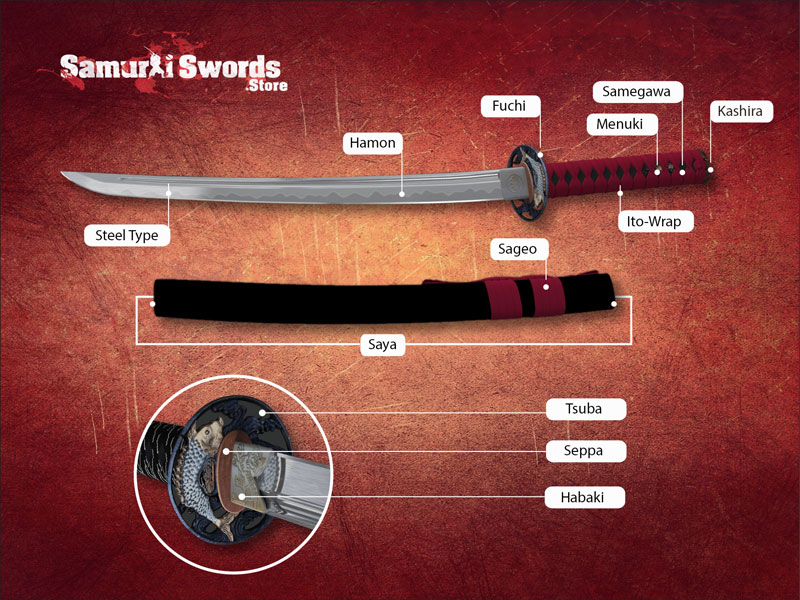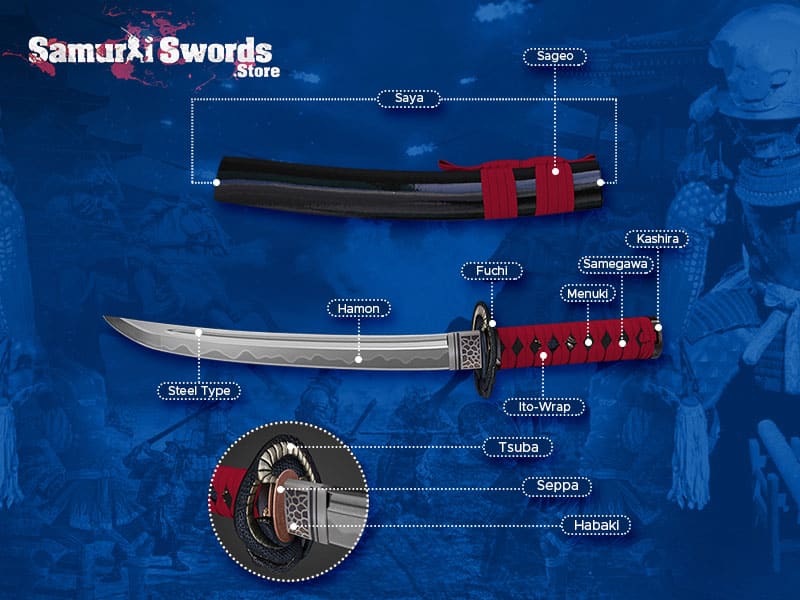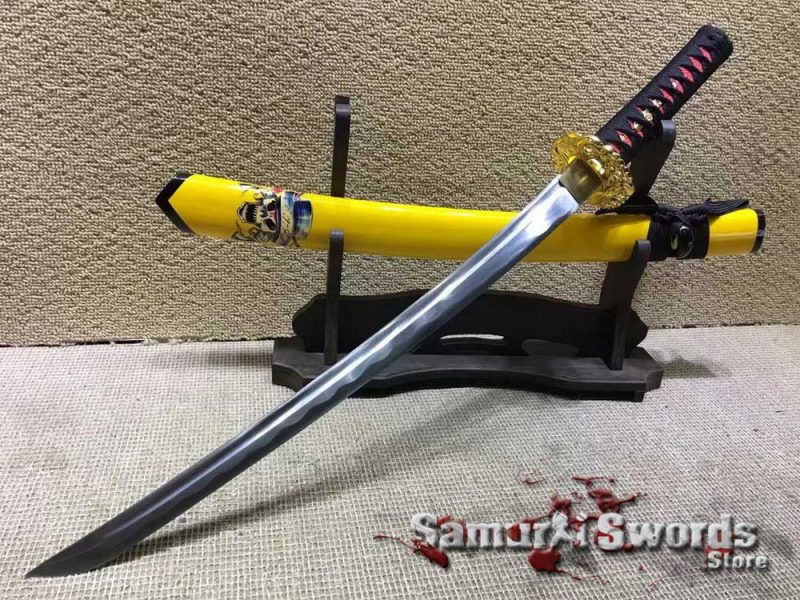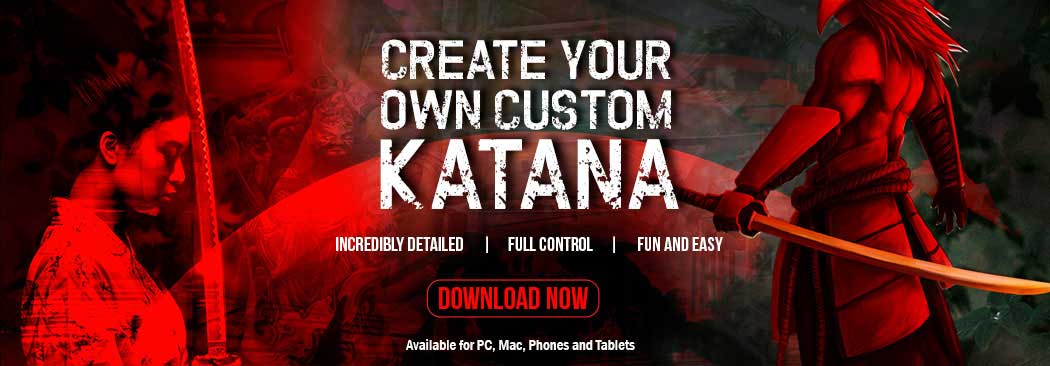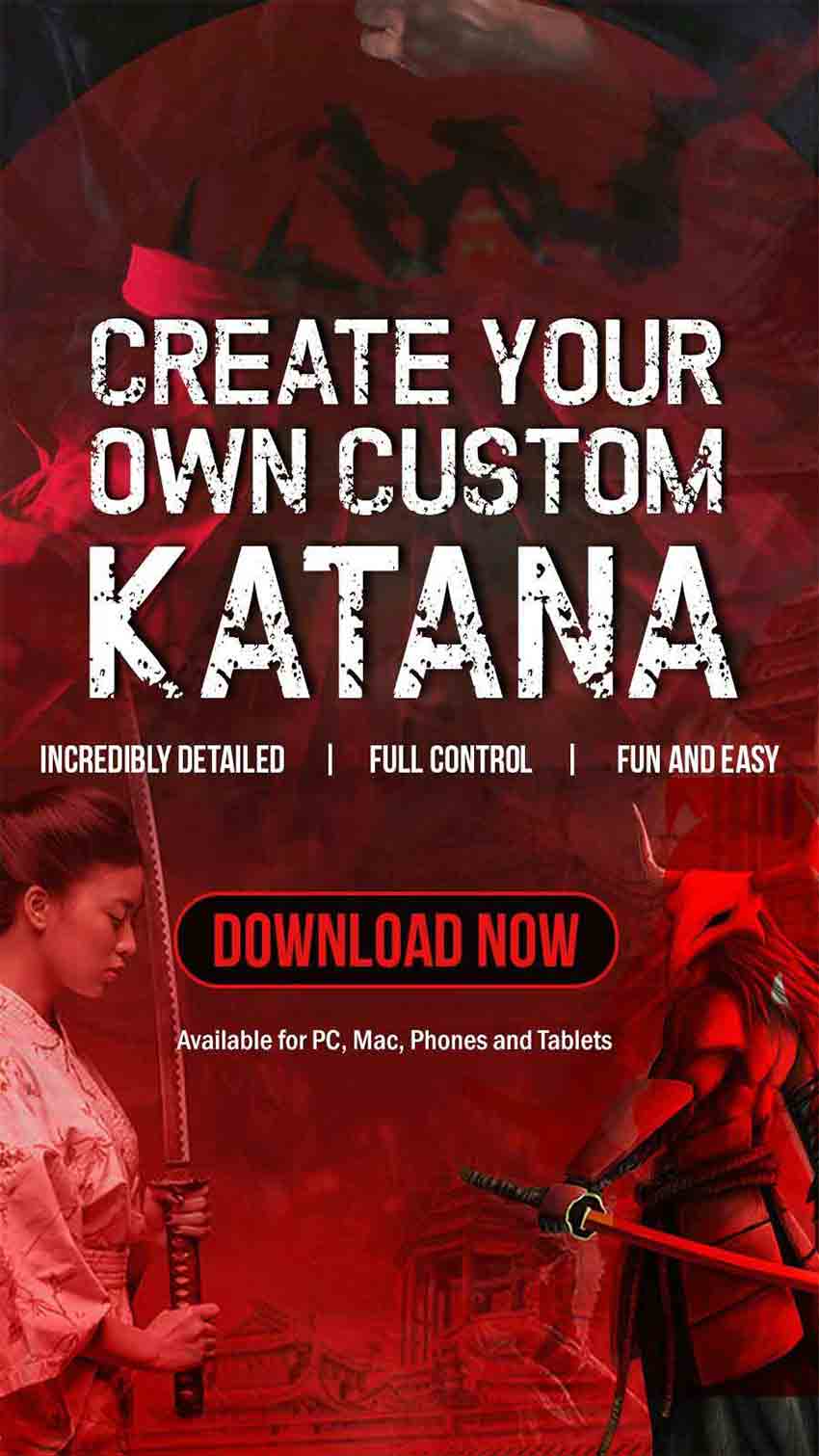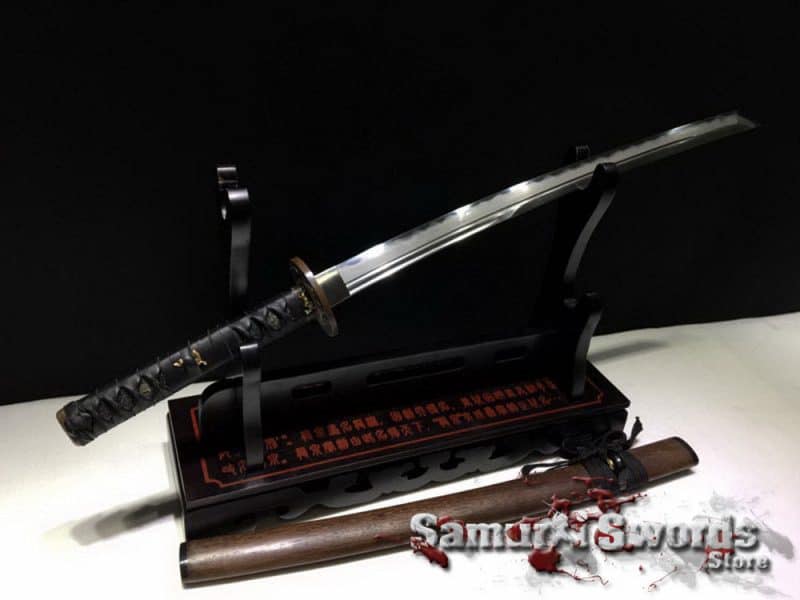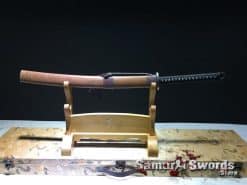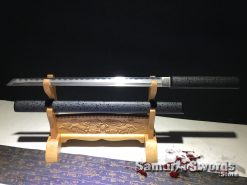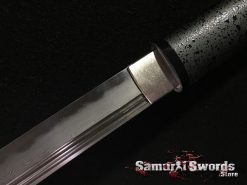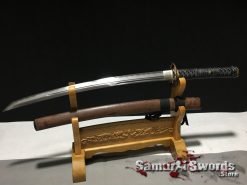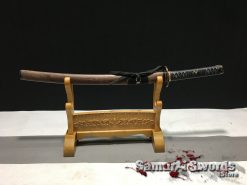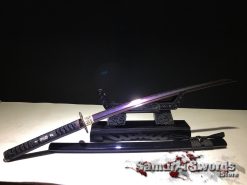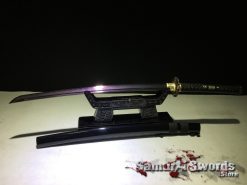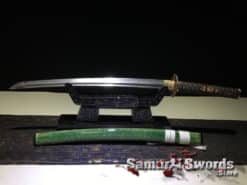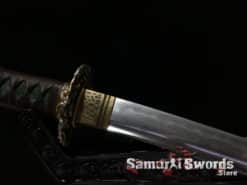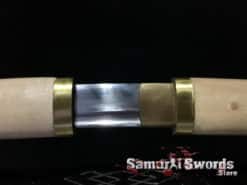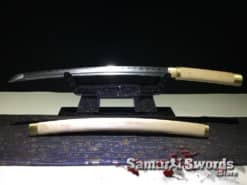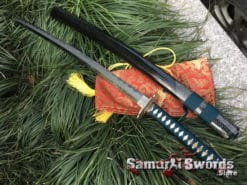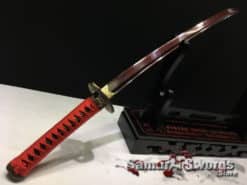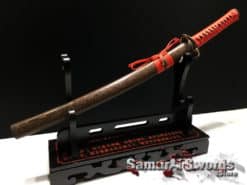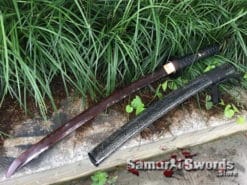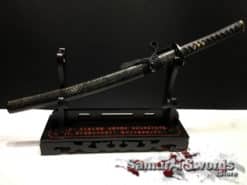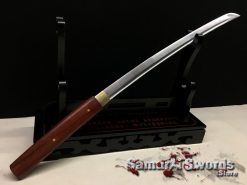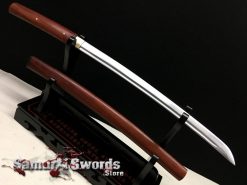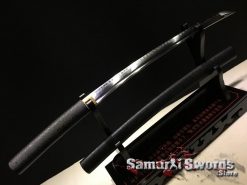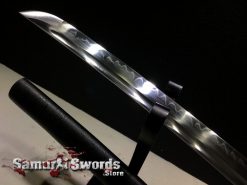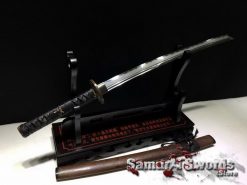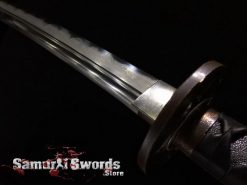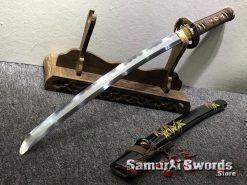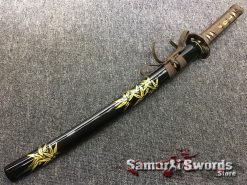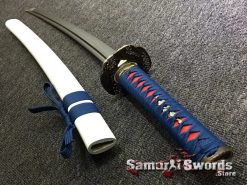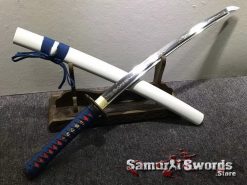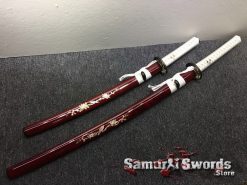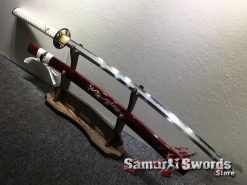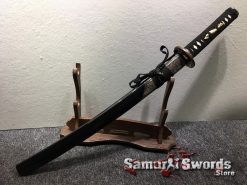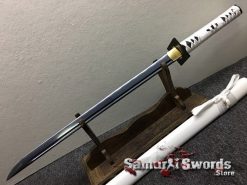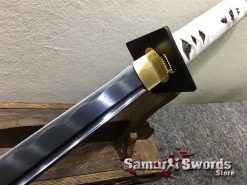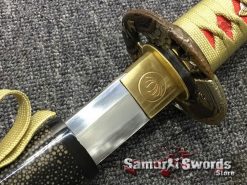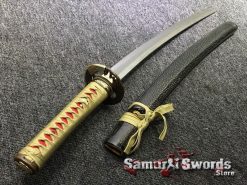Create Your Custom Samurai Sword
What are the Things to Consider When Buying a Wakizashi?
Before purchasing a Wakizashi, you have to consider a lot of things, especially when it comes to its blade’s properties. First, you’ll need to determine the sword’s use. If it’s for cutting practice and training, you will need a functional Wakizashi.
A functional Wakizashi is more durable and can withstand abuse and the rigors of cutting and training. It has a fully-sharpened edge and a full-tang blade.
After that, you can decide which type of steel your blade should be made of. The blade of a functional Wakizashi is made of high carbon steel, which comes in various types and properties. Compared to stainless steel, high carbon is harder and more durable, making blades suitable for cutting.
1060 carbon steel is the most common material for a Nihonto, and it can cut soft to medium targets. 1095 carbon steel Wakizashi has an HRC hardness of 6 and is for extensive Tameshigiri. It can cut bamboo, tatami mats, tree branches.
9260 spring steel Wakizashi are more flexible, and these can return to its original shape when bent or twisted. It can cut soft and medium targets like the 1060 carbon steel.
Another steel type used for the blade of a Wakizashi is T10 steel or tool steel. It’s the best choice for extensive Tameshigiri due to its hardness and durability. Most collectors, enthusiasts, and practitioners choose this sword since it’s strong and excellent for cutting harder targets.
Aside from the blade type, another factor to consider is getting a folded or non-folded blade. Folding was part of the traditional process of creating a sword to remove steel impurities.
Today, folding steel is only done for aesthetic purposes, since the process makes the Hada grain to appear on the blade.
Swords made of specific steel types can also be clay tempered. This method hardens and strengthens the edge of the Wakizashi while keeping the spine soft to make this flexible. A lot of people believe that clay tempering makes a sword more suitable for Tameshigiri.
How Much is a Real Wakizashi?
A real Wakizashi sword is expensive. However, it depends if this is an antique or modern Wakizashi. Several factors may affect its price.
Whether you search for an antique or new Wakizashi, the prices of these will differ in each shop. Some swords feature specific blade properties and designs that others don’t have. The methods used in creating the sword can also affect its costs.
A Chinese-made Wakizashi that is considered as traditionally made can cost around $1,000 to $2,500. Other high-quality Wakizashi cost around $10,000 to S15,000.
Cost of labor is one of the factors that add to its price, and the season can also affect the price of a Wakizashi.
Some months of the year can be too hot to work on forging a sword in a furnace, and obtaining the Tamahane can be more challenging than usual. Because of that, the price of the Wakizashi tend to increase by large amounts.
The other parts and the included accessories can also make the Wakizashi more expensive. It depends on the material used for the Tsuka, Tsuba, Fushi, Kashira, and Menuki. Also, the sword’s total price can be high if the fittings and ornaments have intricate designs.
Modern mono-steel Wakizashi are available from numerous sources. These have good quality blades that are suitable for functional use, and usually cost a few hundreds of dollars and above. Prices typically depend on the blade’s characteristics.
The prices of Modern Wakizashi made using traditional methods, but not manufactured and licensed in Japan vary. Apprentice-level swords cost more than a thousand dollars, while custom advanced-level swords cost around $10,000 or higher.
The steel of the non-Japanese manufacture modern Wakizashi come from a different source, making it cheaper than licensed Japanese swords.
These consist of multiple layers of steel varying in carbon content. Usually, this type of Wakizashi undergoes differential hardening.
Japanese-licensed Modern Wakizashi forged by registered swordsmiths from Japan are highly expensive. Since they are preserving the art of swordmaking, they use traditional methods and materials like the swords used in feudal Japan.
A sword costs around $1,000 per inch and these aren’t for sale like the swords you can find online.



